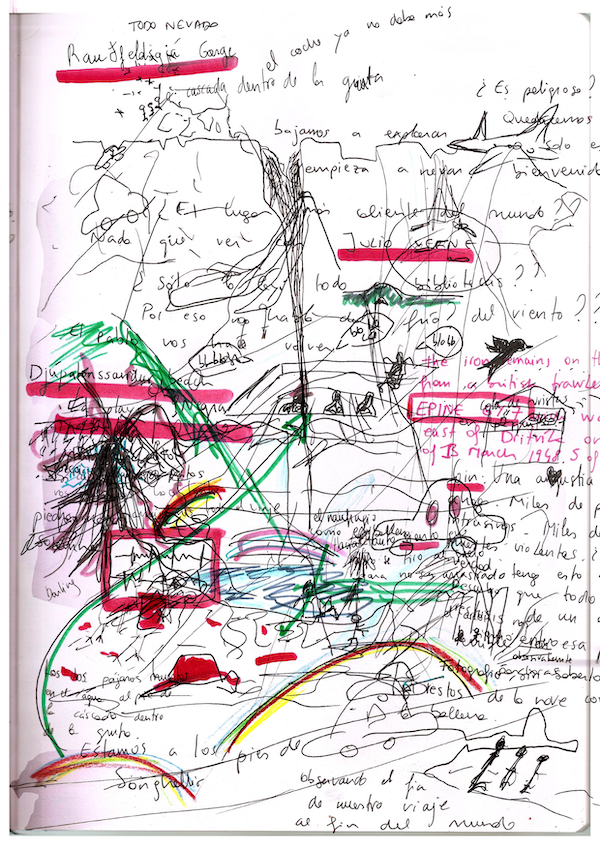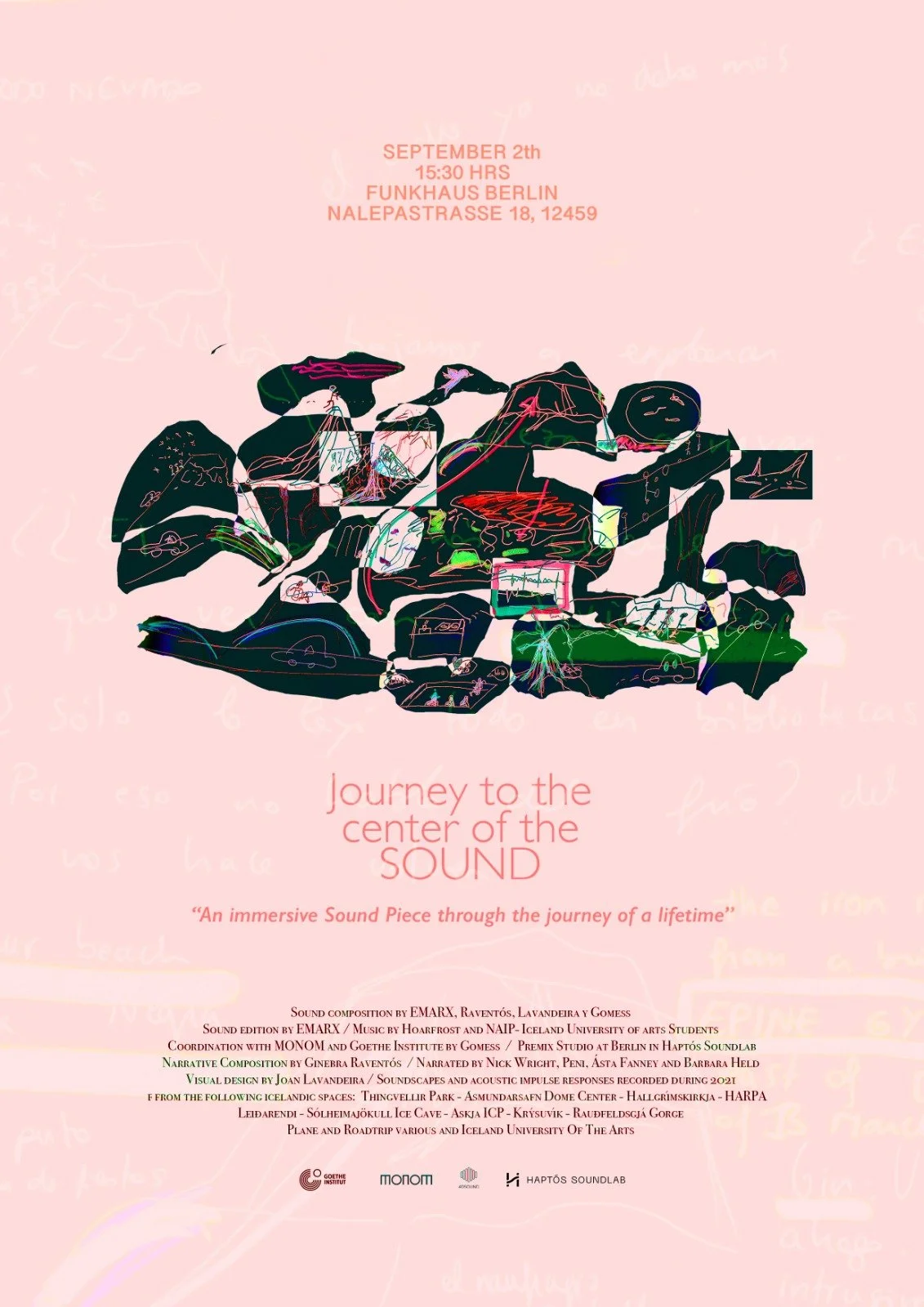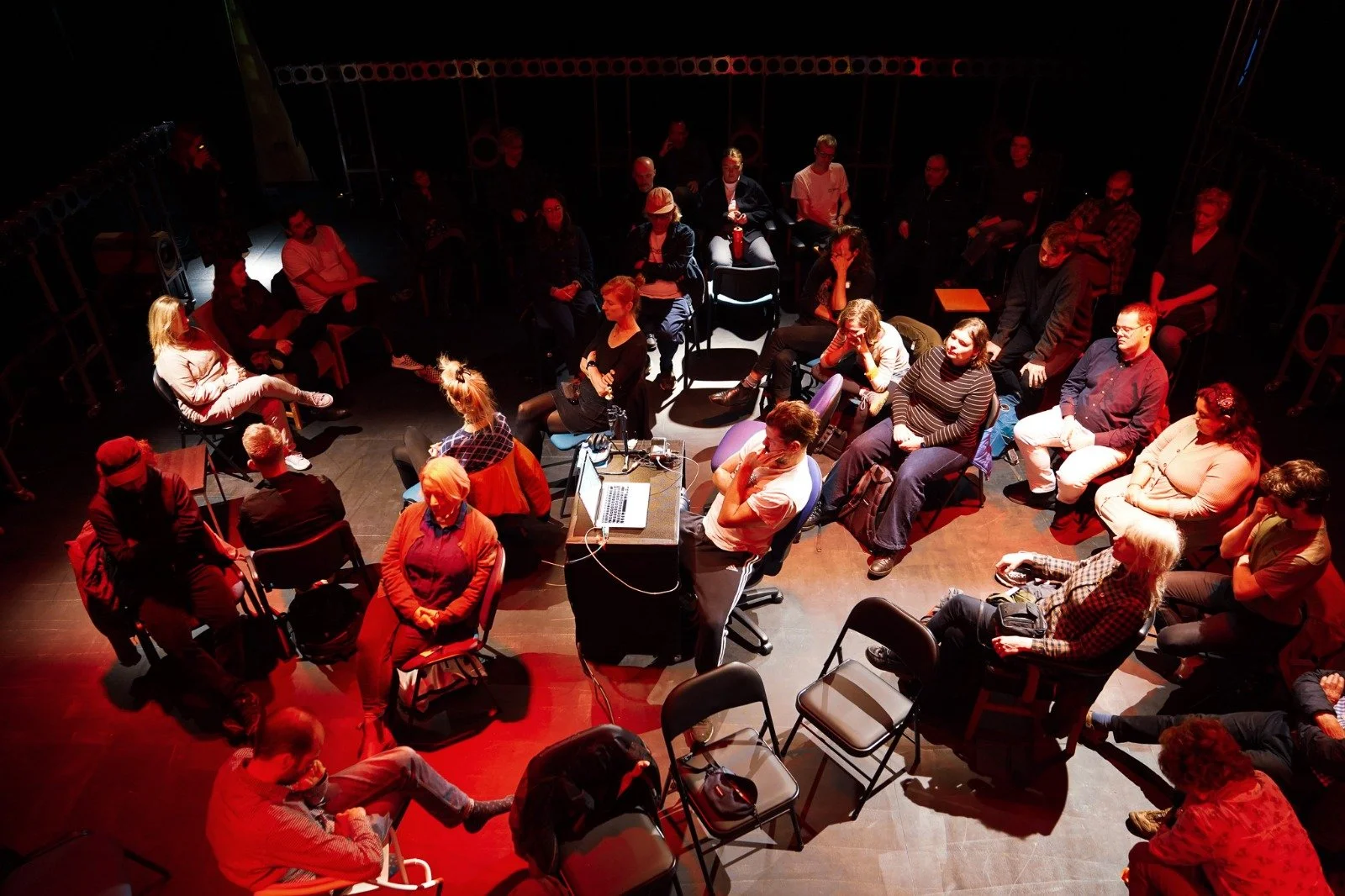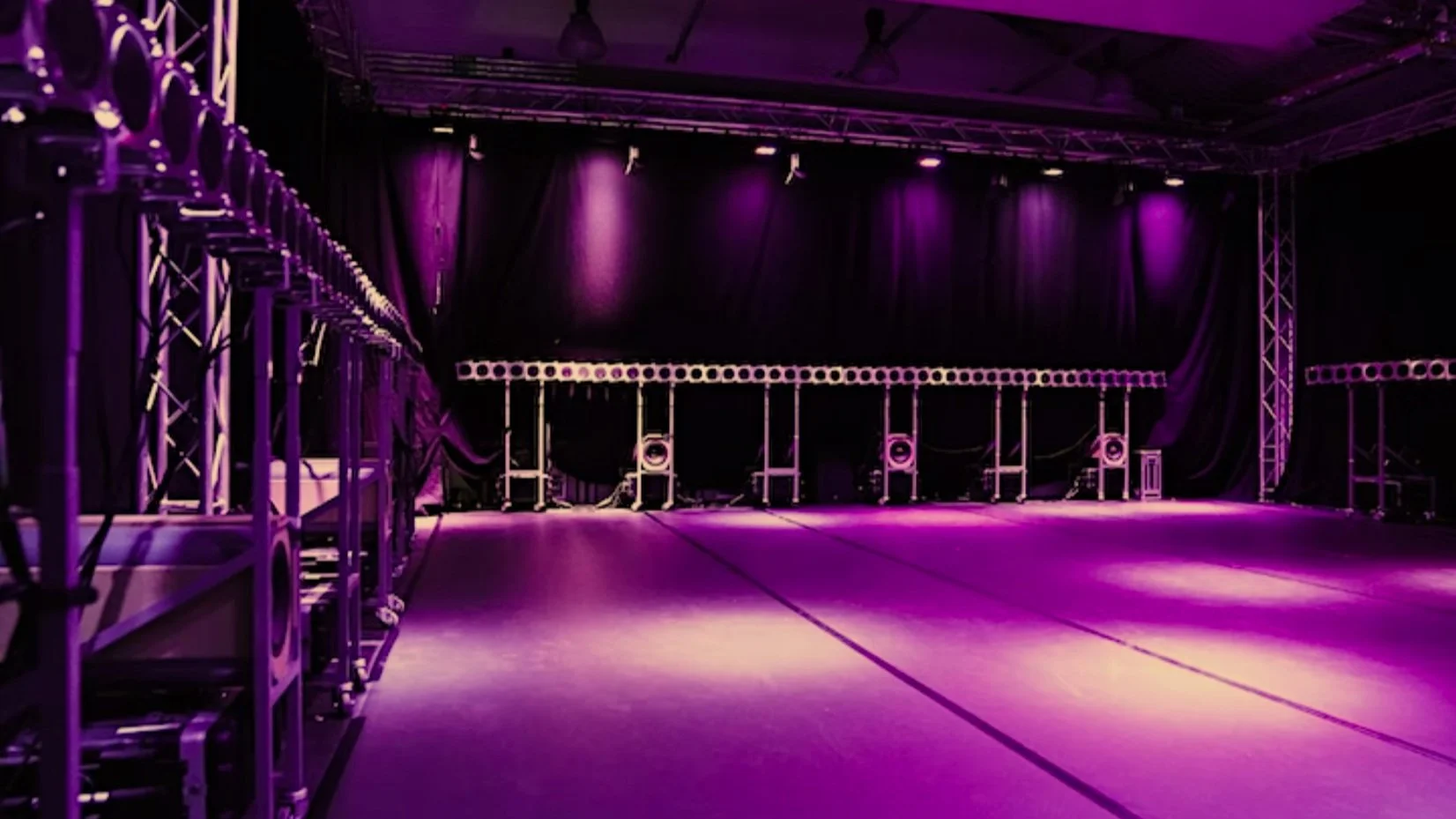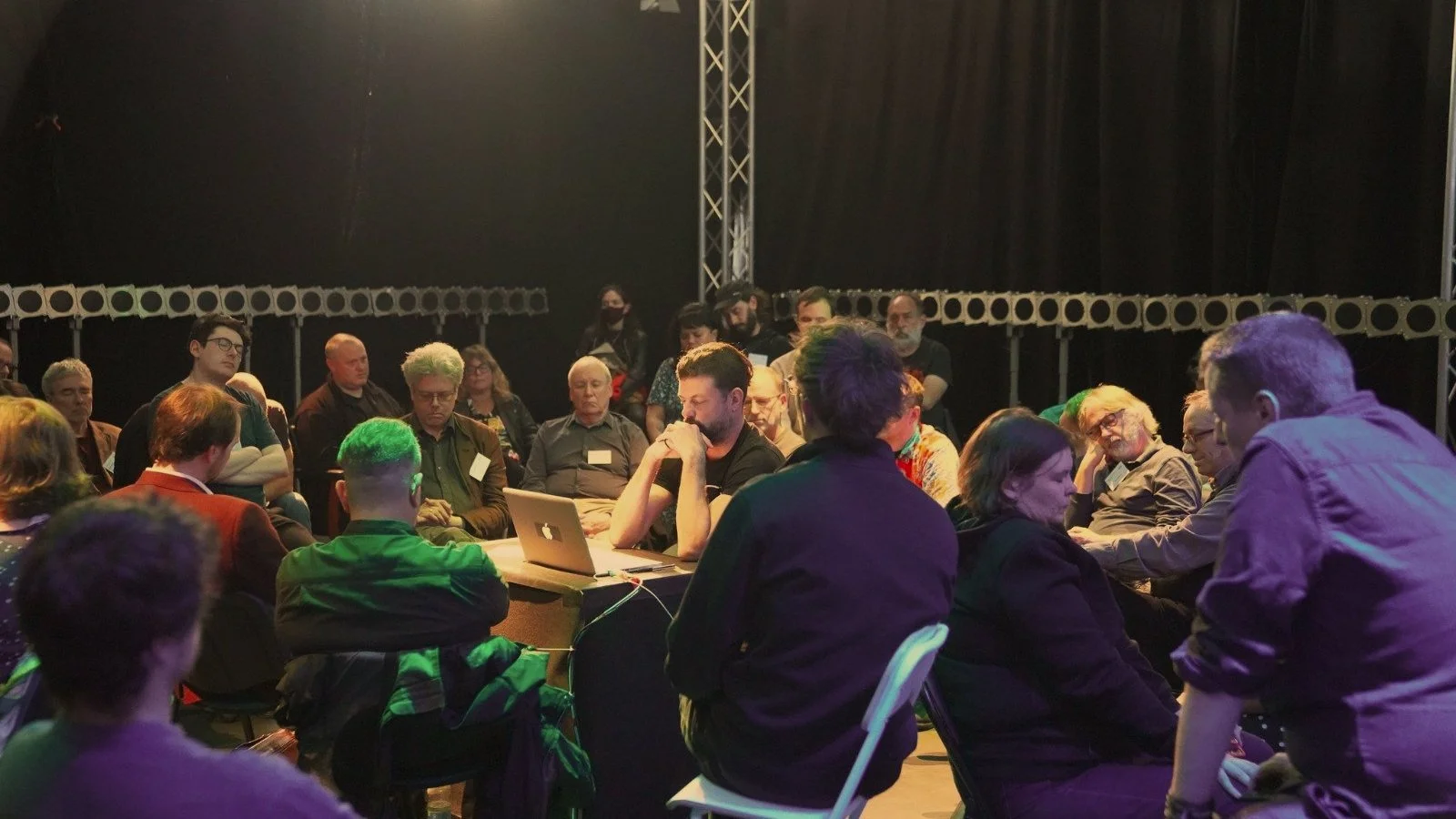In September 2021, after finishing their project on the acoustic heritage of Thingvellir National Park, the Acoustic Heritage Collective decides to take their portable recorders to Snæfellsjökull, the famous Icelandic volcano that, according to Jules Verne's book "Journey to the Centre of the Earth", takes the protagonists of this famous story to the depths of the earth. This place is the starting point to create an immersive sound piece entitled "Journey to the Centre of Sound", in which sounds, soundscapes, acoustic reverberations, poetry and the music of the band Hoarfrost mix with visuals and fog to create a unique composition.
This sonic quest was extremely different from what we might be used to. Iceland's unique nature, adverse weather and geological phenomena lead to an aural journey that is hard to forget.
Journey to the Center of the Sound
In science, as in mathematics, a substantial part of knowledge results from the analysis of boundary conditions. Iceland represents this. It is to stand on the edge of the earth and listen to how our geography is (de)constructed. It is fascinating to imagine what it was like in the past when it was all ice, and terrifying to hear how new surfaces emerge from the centre of the planet. Like Axel and Otto Lidenbrock, the two characters in the 1864 novel who set out on their journey to Iceland equipped with food, tools, weapons, instruments, torches and a first aid kit, the collective decided to travel with equipment that allows a new dimension of listening. Equipped with different recording instruments, such as electromagnetic field microphones, contact microphones, omnidirectional microphones and hydrophones, they went into different landscapes, listening to and recording sounds from glaciers, geysers, lava caves, polar winds and waterfalls, thus challenging the limits of human hearing.
"Journey to the centre of sound" is an acoustic synthesis, where each sound source, so different from each other but representing the same feeling, is tuned to create a new sound object.
In addition to sounds, the acoustic characteristics of the spaces were recorded on ambisonics. Their reverberation, defined as the interaction of reflected sound waves on each surface of the physical space, is the most relevant acoustic parameter for the localisation of sound sources. In this way, this composition opens up new immersive acoustic spaces, in which sound objects are redesigned in a new sound/space relationship. The auralisation of these spaces allows us to construct a sound story in three dimensions, from inside and outside, from below and above or from above and below.
This sound journey, beyond aesthetics, aims to relate space to the past, present and future by offering a broad and fresh approach to sound mapping and acoustic ecology.
The Field Recordings
Journey to the Center of the Sound includes ambisonic and stereo soundscapes and acoustic impulse responses recorded during 2021 from the following icelandic spaces:
Thingvellir Park
Ásmundarsafn Dome Center
Hallgrímskirkja
HARPA
Leiðarendi
Sólheimajökull Ice Cave
Askja ICP
Krýsuvík
Rauðfeldsgjá Gorge
Iceland University Of The Arts
Plane and Roadtrip various
The Narrative and The Narrators
Narrative design and composition were led by sound artist and poet Ginebra Raventós.
Narrators include Nick Wright (USA), Peni (CAT), Ásta Fanney (ISL), Eduard Escofet (CAT), and Barbara Held (USA)
The Presentations
"Journey to the Centre of Sound" was awarded the "Virtual Preparation for Residencies" grant by the Goethe Institute in 2022. This helped this work to be elaborated in such a way that it can be dynamically transferred to different scenarios and reproduced in different immersive audio systems such as 4DSound or Wave Field Synthesis.
In the following, a summary of some of the presentations is provided.
MONOM
A week-long residency to create a first approach to the spatialization of the piece at the MONOM cultural center and sound laboratory, located at Funkhaus Berlin, on September 12, 2022. The heart of MONOM is the 4DSOUND sound spatialization system, made up of 48 omnidirectional speakers suspended throughout the enclosure, extending to 9 powerful subwoofers submerged under an acoustically transparent floor. Then, a work preview of the "Journey to the Center of Sound" was made, which invited listeners to a sound journey through the landscapes of this European island, combining field recordings, music and poetry.
Video and Binaural Audio of MONOM presentation
Audiofile: Binaural Mix Download (48 KHz/24bit)
THE SOUND CARTOGRAPHY CONFERENCE 2022
The Sonic Cartography conference invited composers, artists, filmmakers and scholars interested in environmentally informed practices to come together and debate the issues surrounding the aesthetics, ethics and politics of mapping and storytelling within creative and heritage contexts. During the summer of 2022, we had access to a custom wavefield synthesis system consisting of 192 loudspeakers. Proposals for new compositions for the WFS system were developed, responding to the theme of the conference. This residency opportunity gave us access to the WFS system workspace as well as custom software for remote compositing. We were able to develop our composition remotely via a binaural emulator and visit the WFS workspace for detailed mixing and editing.
This residency was possible thanks to the invitation of AΦE Lab and the sponsorship of Game of Life.
360 Live Version - Binaural (Headphones required)
Audiofile: WFS Stereo Mix Download (48 KHz/24bit)
The main objective before creating "Journey to the Centre of Sound" was that this piece could be adapted to different formats, from physical to digital spaces. The result has been a creative process involving various fields of sound and spatial research. The most recent approach has been to design a methodology to transfer this work of art to a simulated space using videogame engine technology that can be experienced in virtual reality glasses.
For this purpose, the presentation at MONOM Studios in 2022 (see above) has been used as a case study.
A common problem in spatial art practice is that most immersive spaces and equipment are expensive and difficult to access for many artists and audiences. Therefore, the main interest in the development of this project is to propose an option to make these spaces and experiences more accessible not only for creators but also for the general public.
On the other hand, most of the initiatives on the virtualisation of spaces are very focused on the representation of visual elements and often the simulation of acoustic spatiality is relegated to the background. Bridging this gap is a challenge.
This sound research takes as its starting point the spatial and sound recordings made in Ambisonics at MONOM, and through the applied theory of room acoustics, virtualisation and auralisation strategies, aims to open up new dialogues between reality and simulation.
This project was presented during the IRCAM Forum Workshops 2023 in Paris.
IRCAM
ForumWorkshops2023
Here can you download the Beta Version for Oculus 2
Here you can read how to upload an .apk file to Oculus Quest with the Side Quest advance installer





